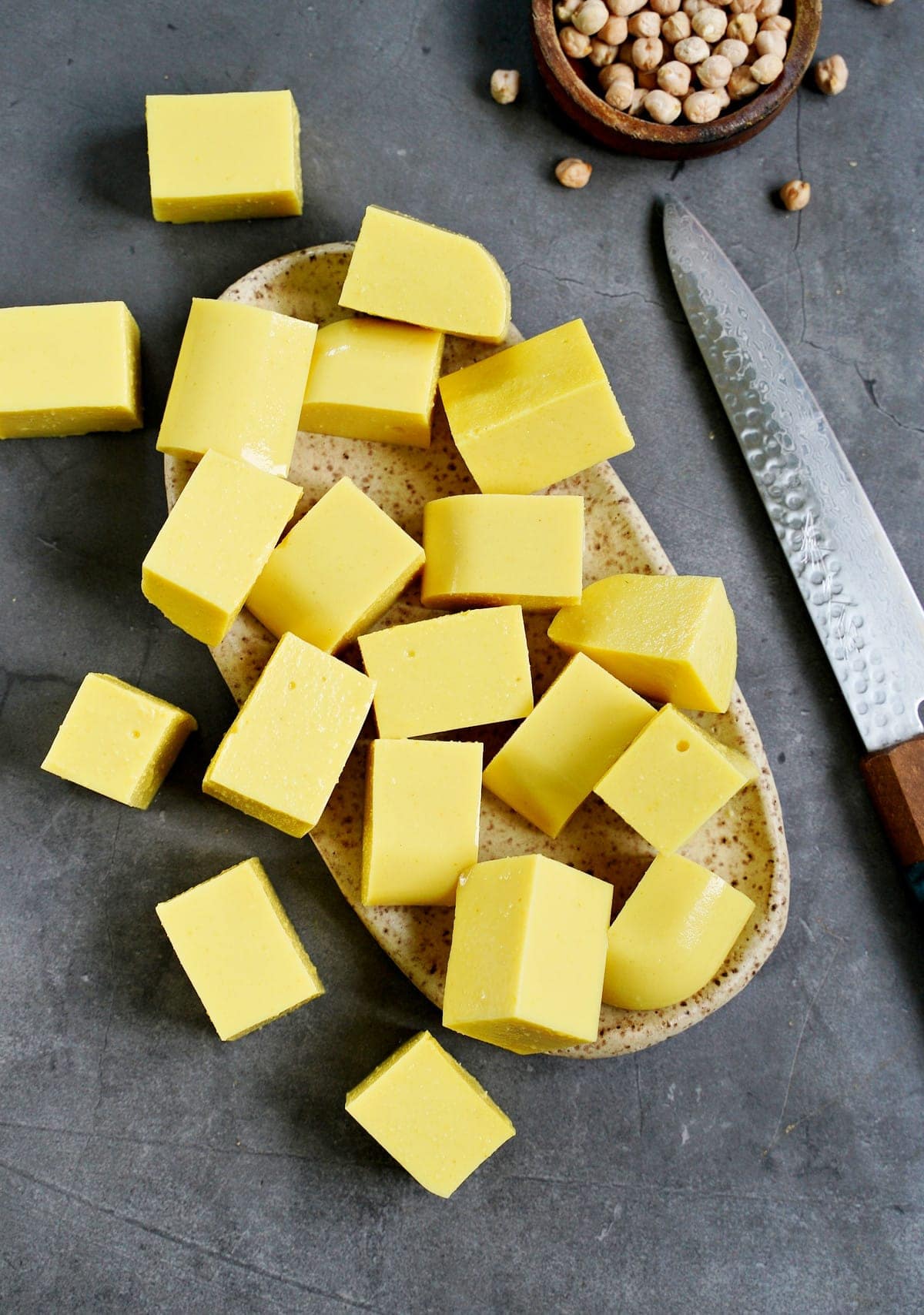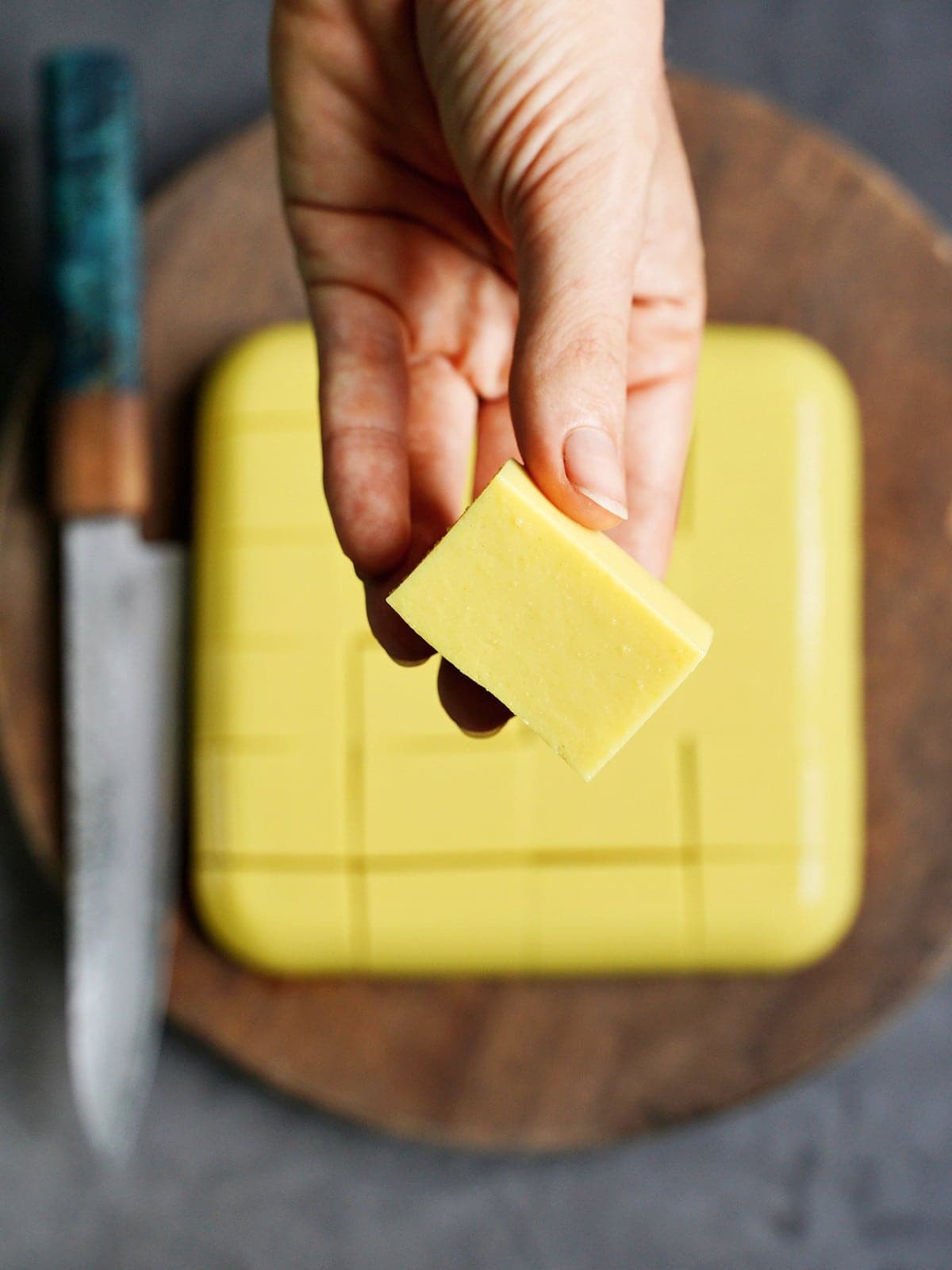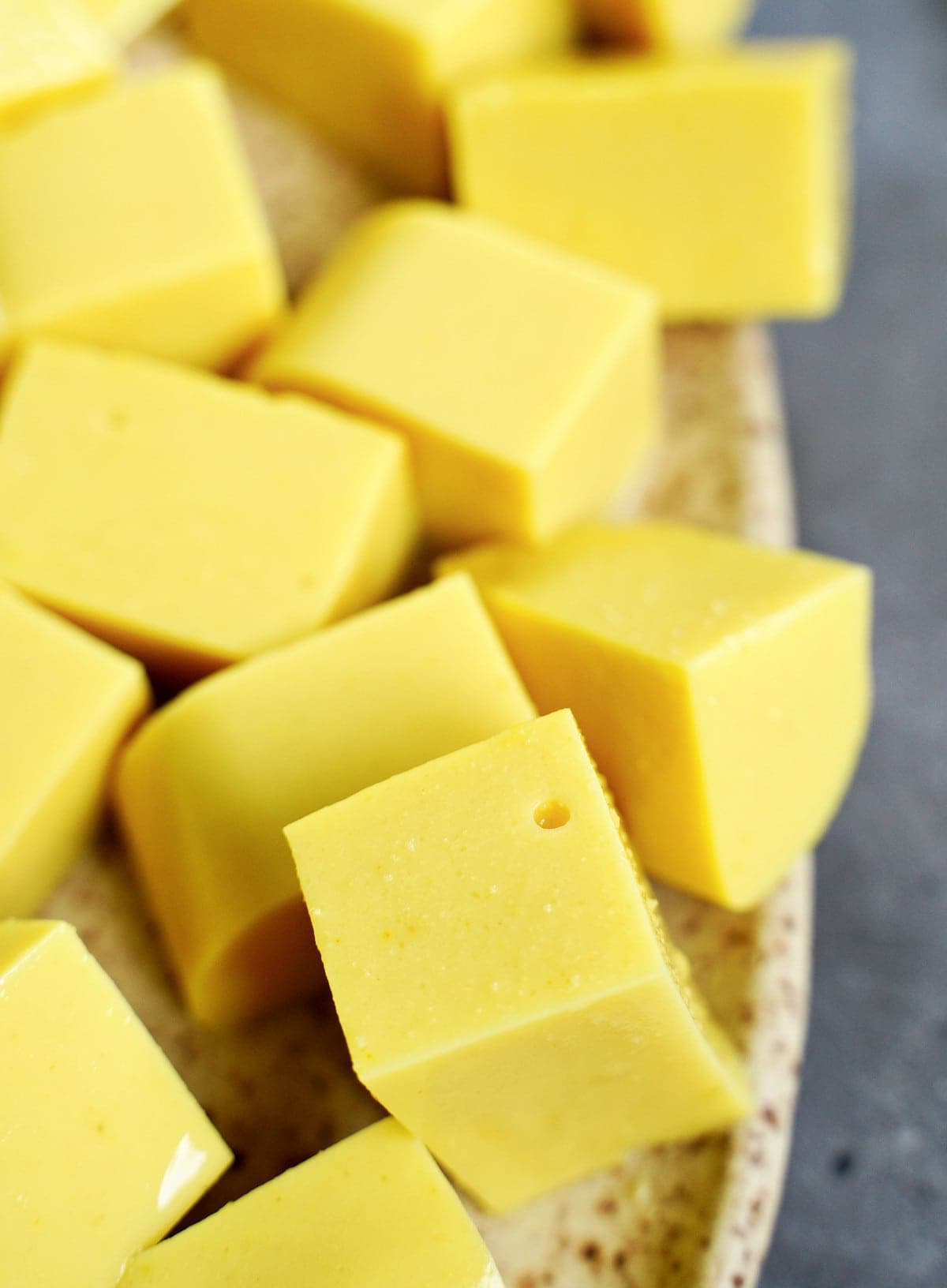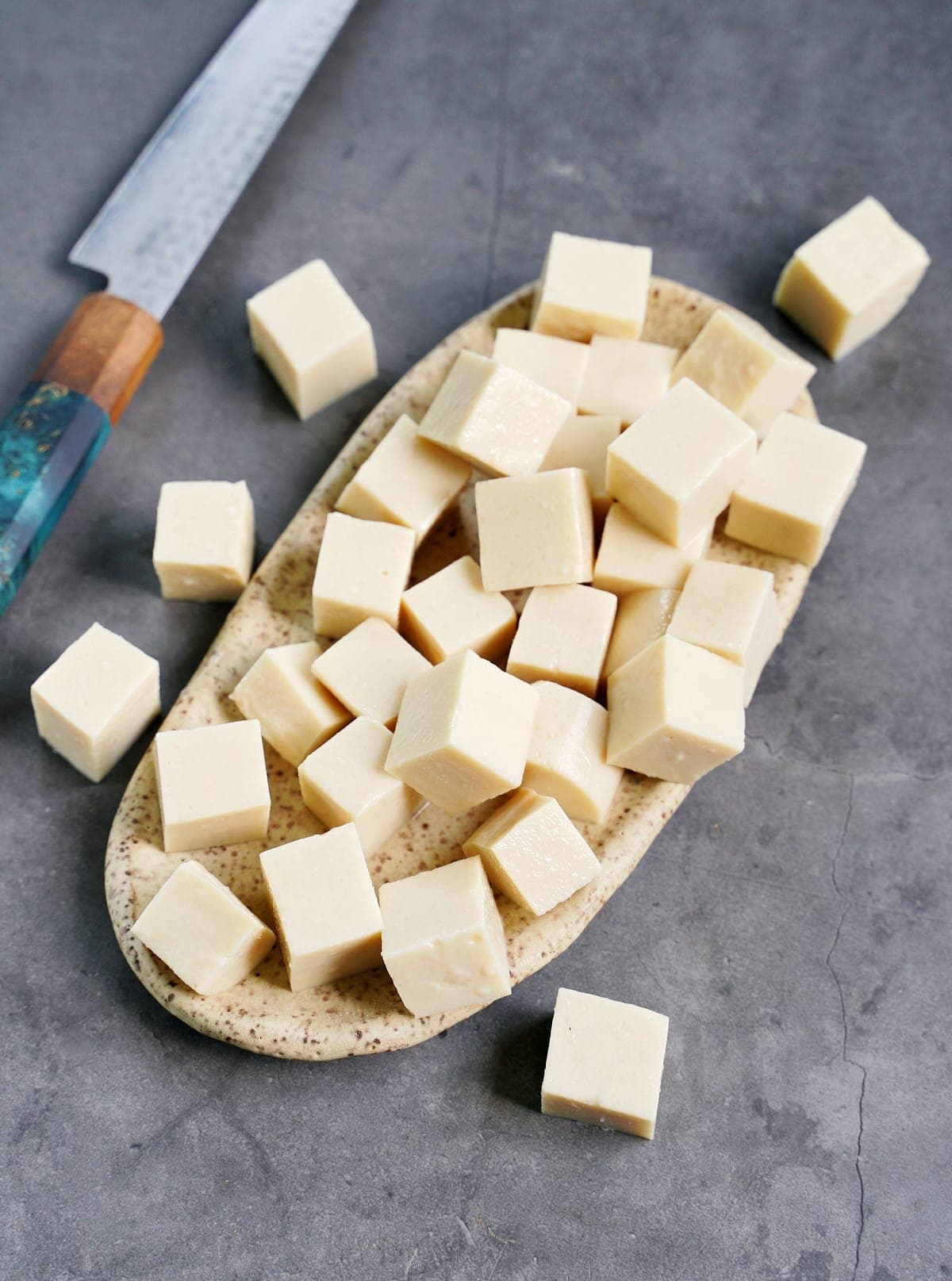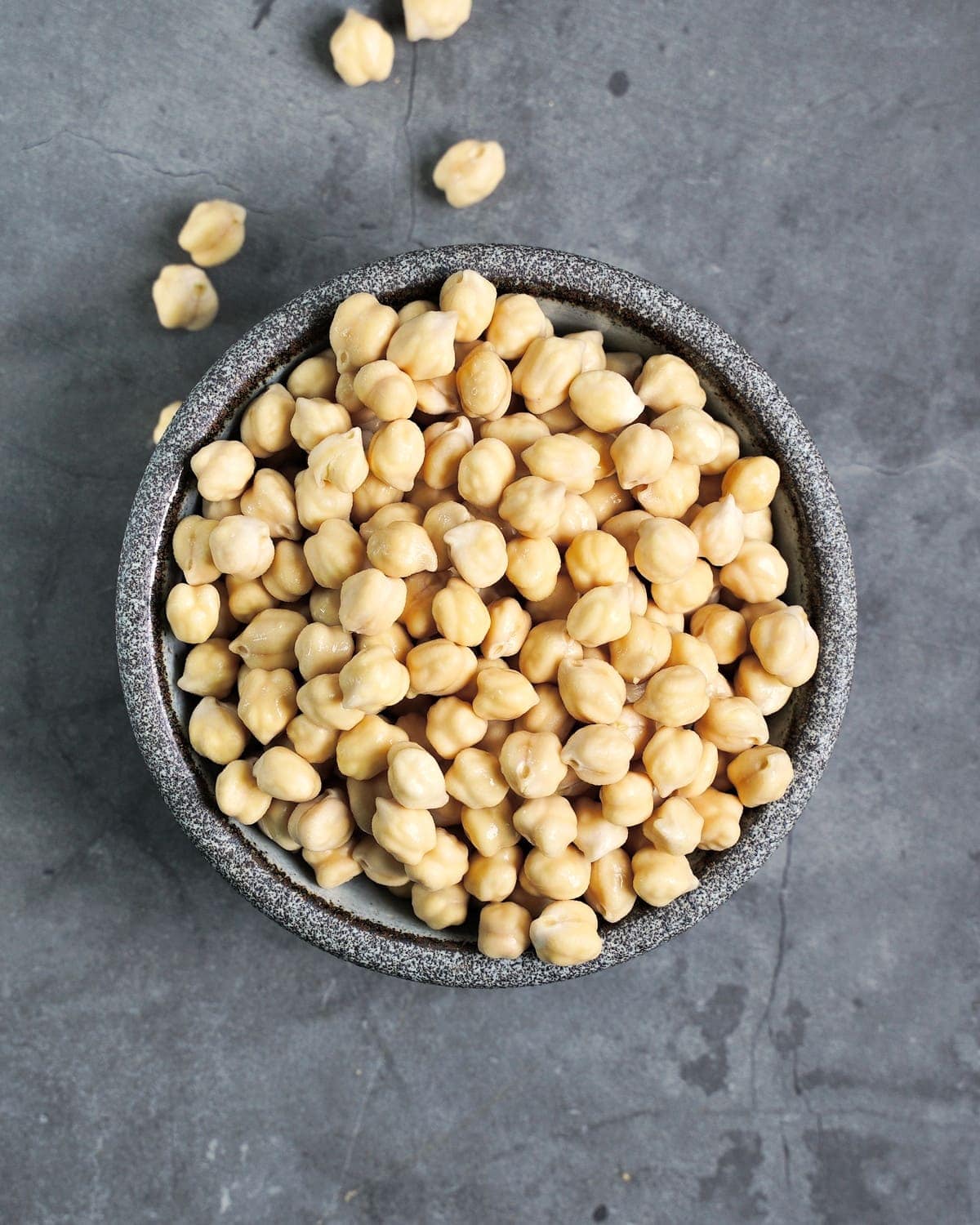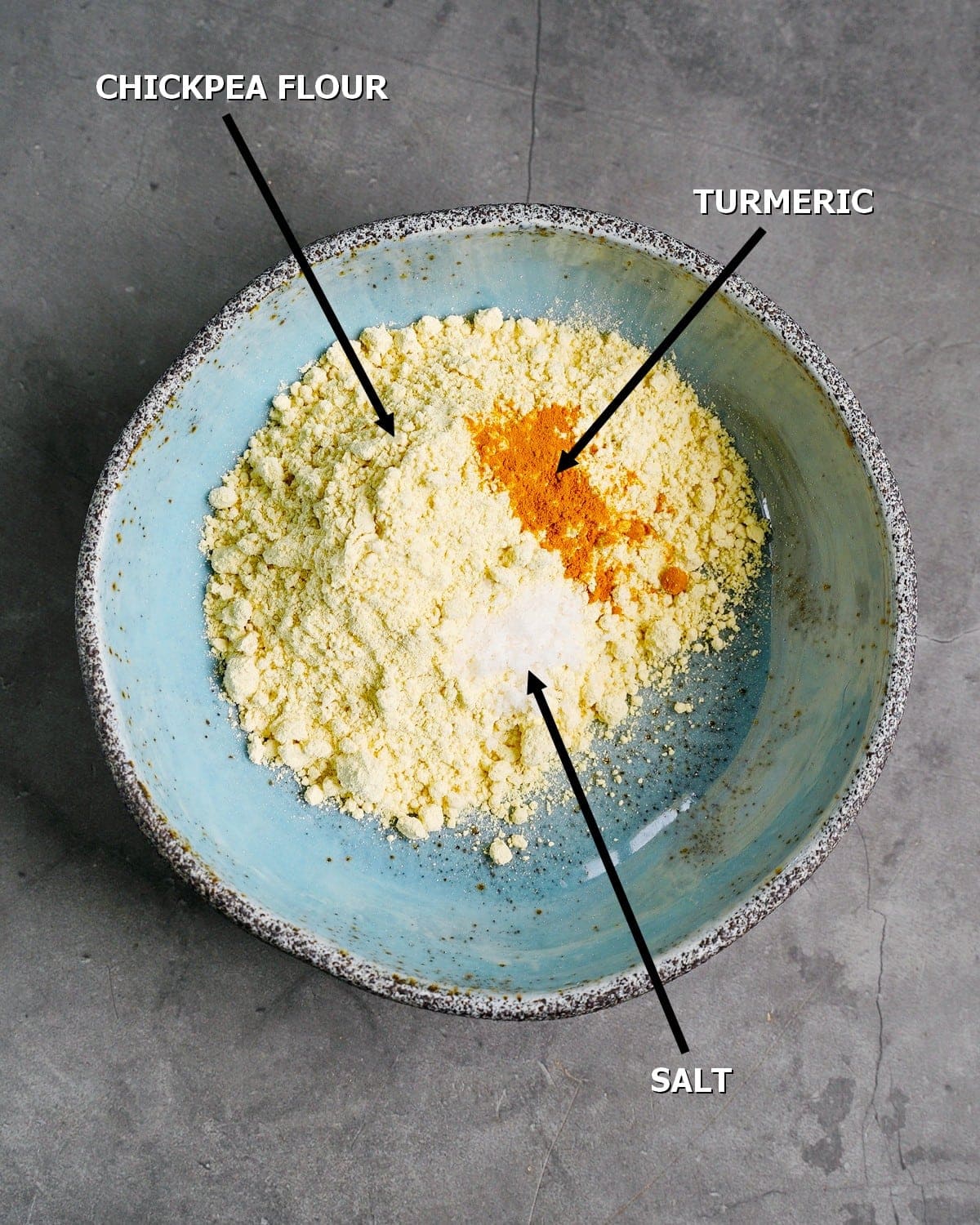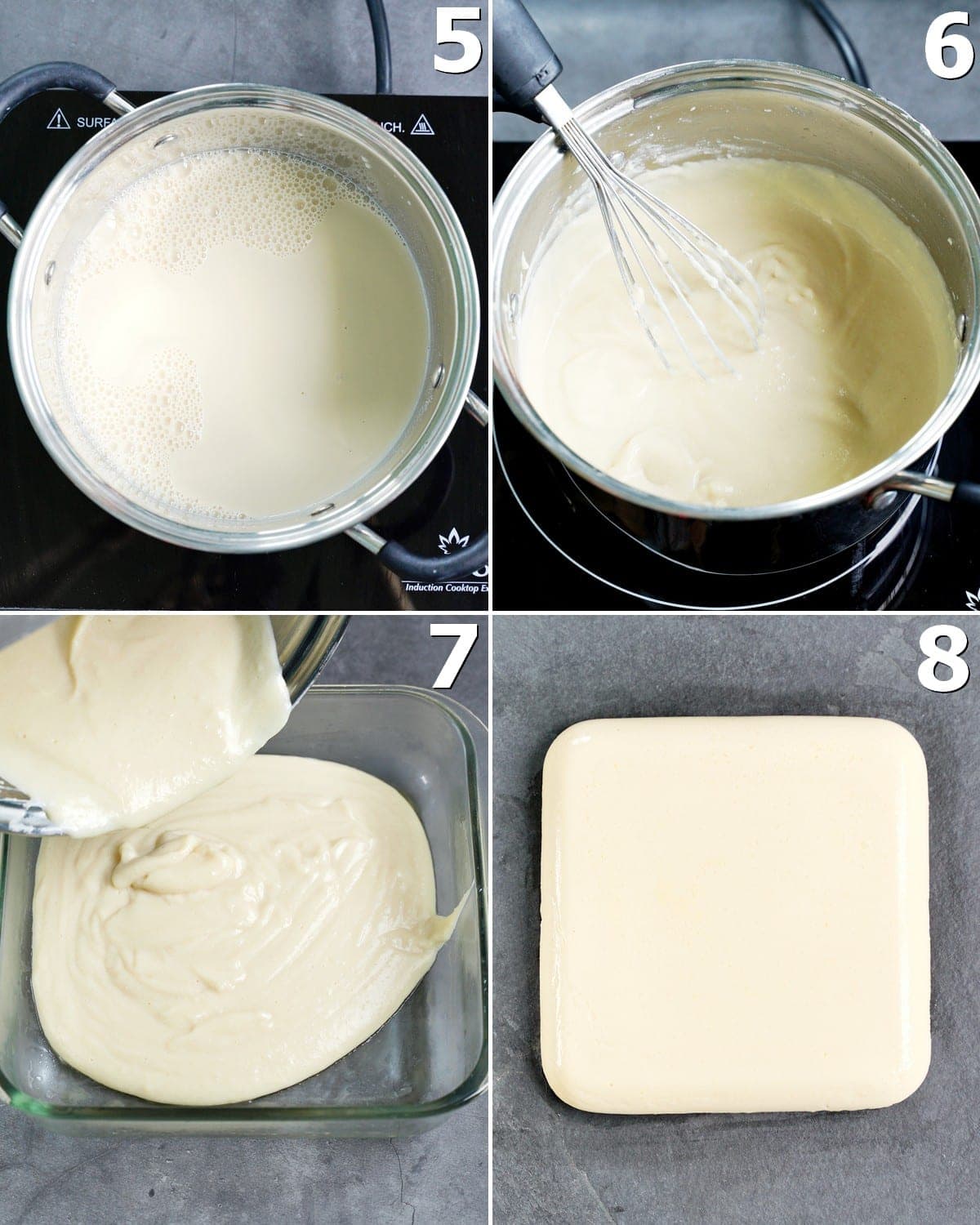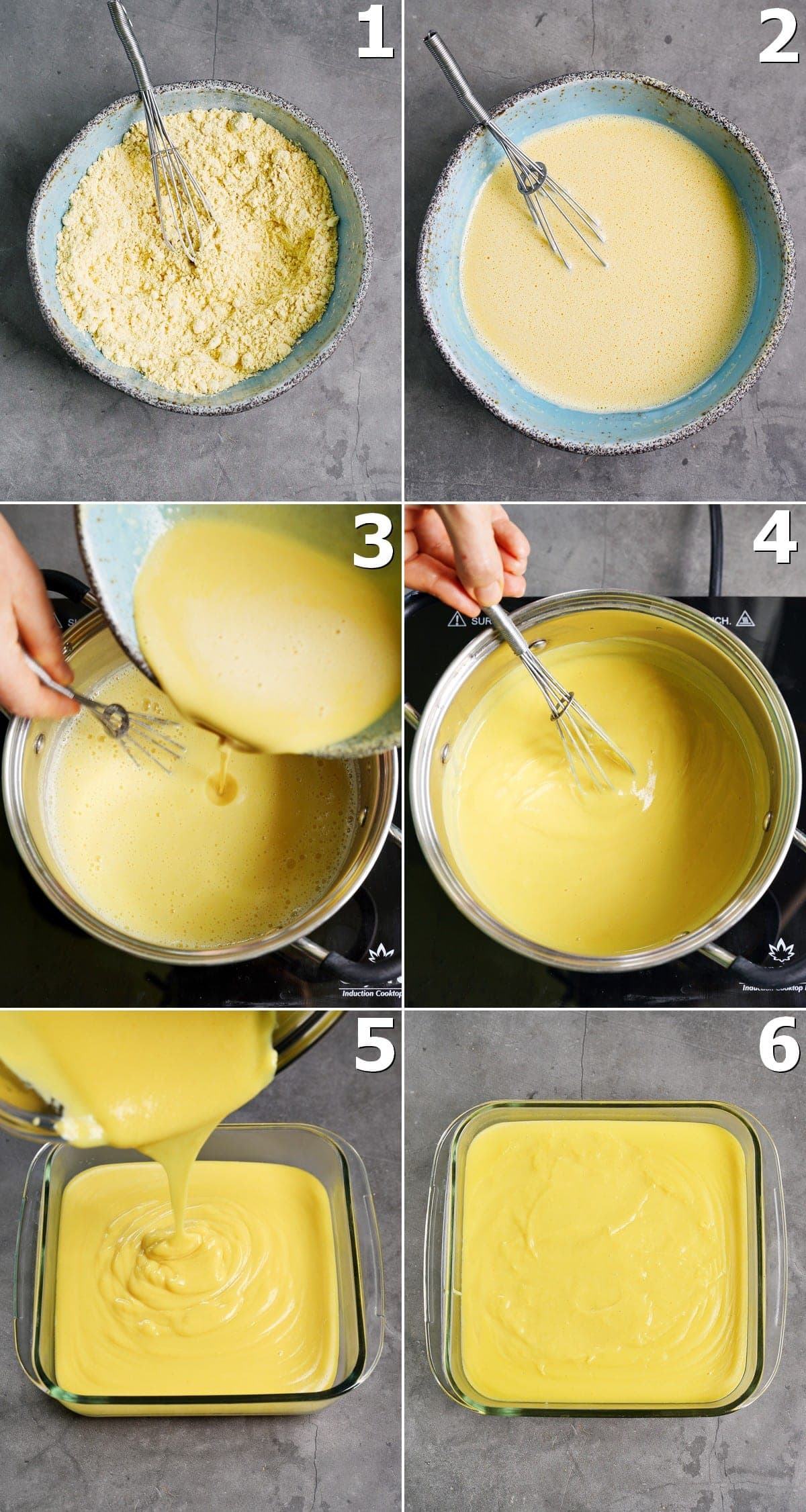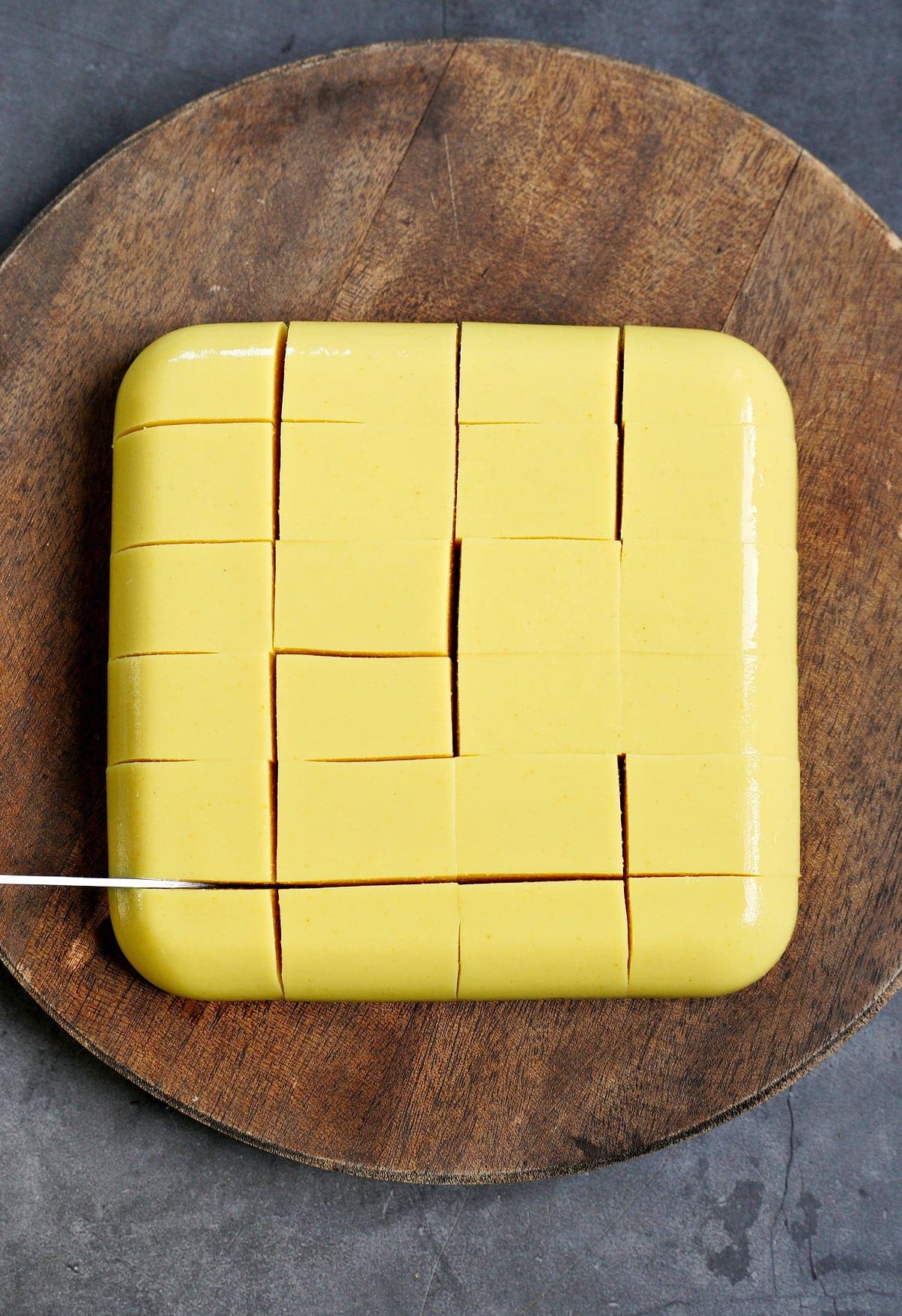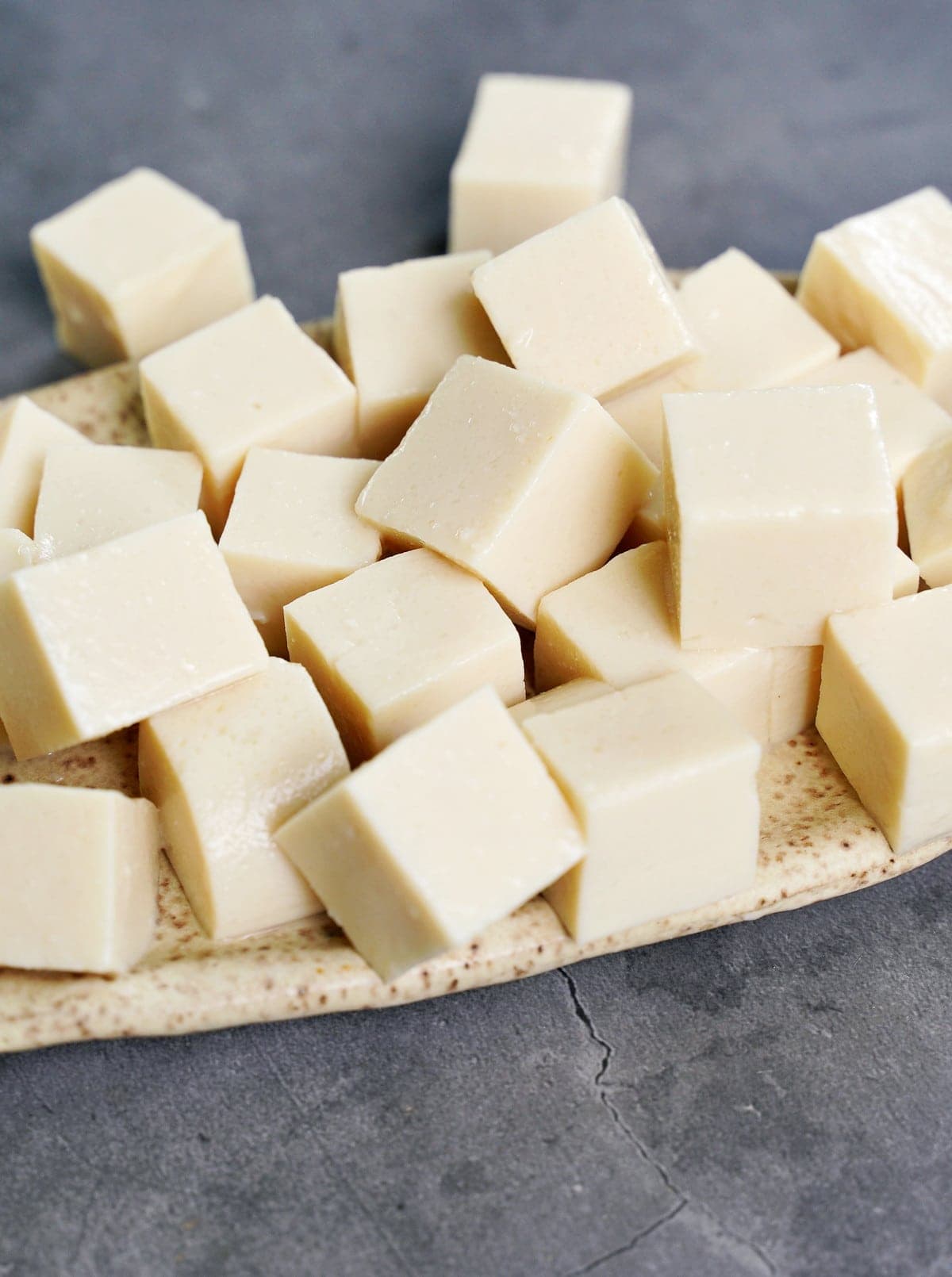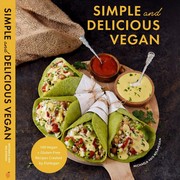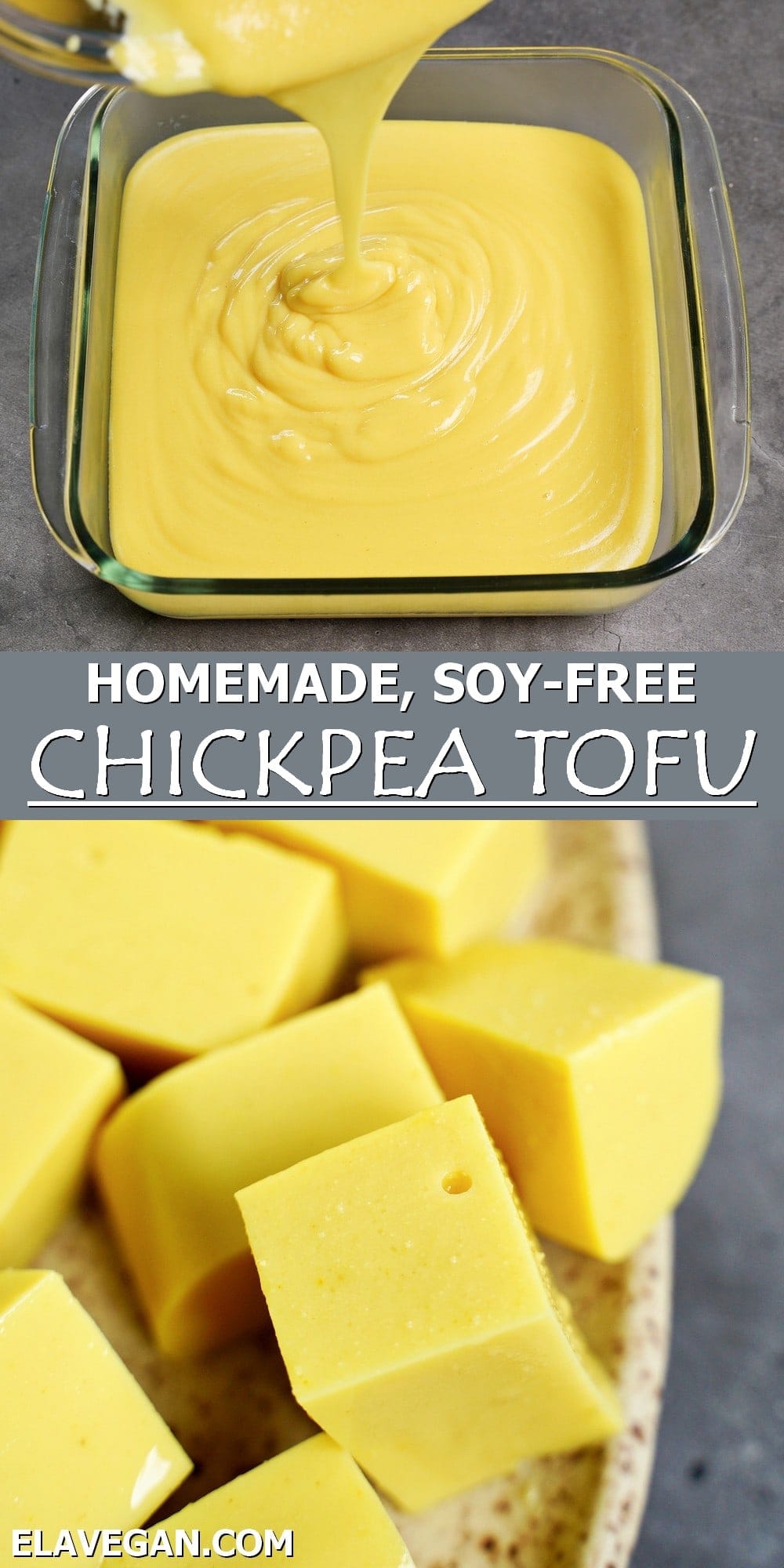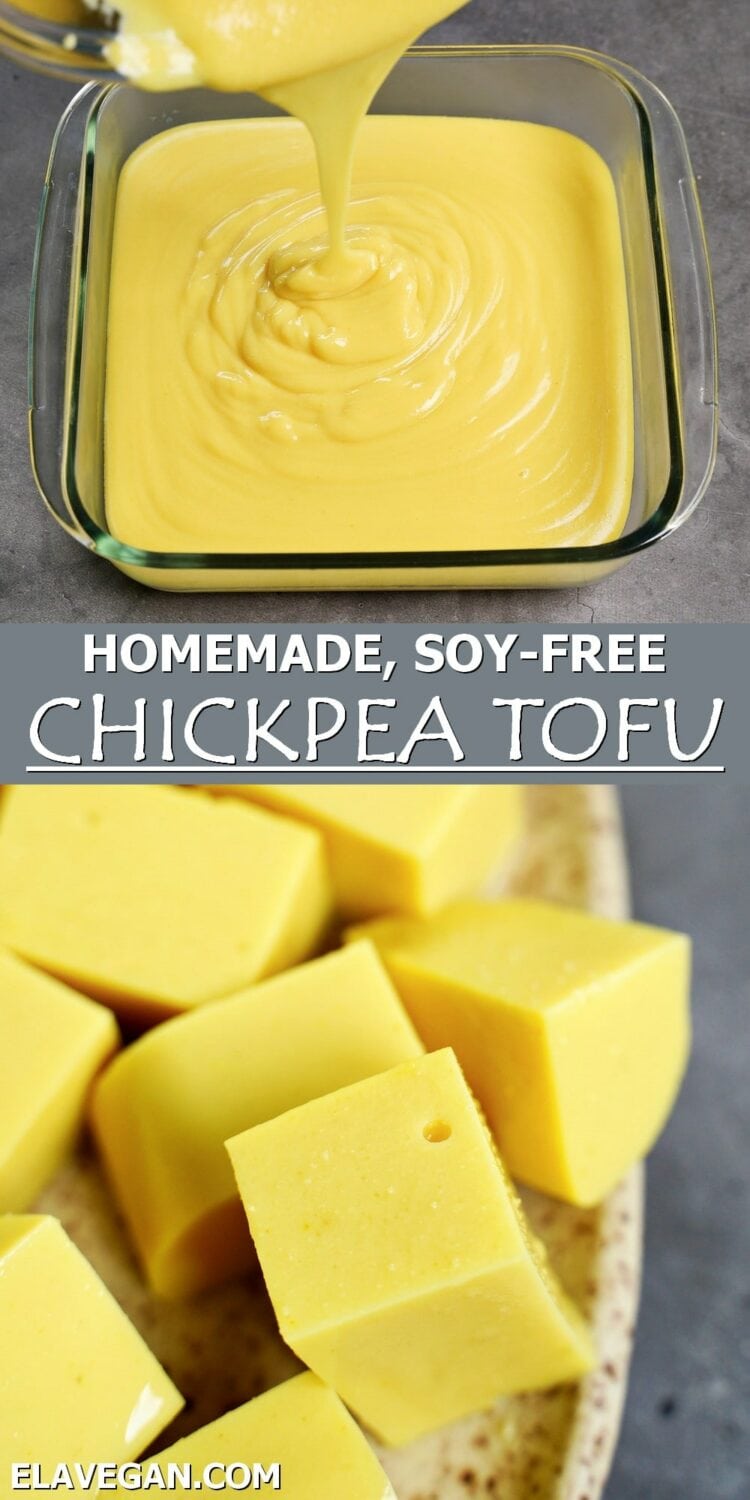Chickpea Tofu; A Flavorful, Soy-Free Tofu Alternative
As a long-time vegan, I’m definitely no stranger to tofu. However, even with an increasing population of meat-reducers and eliminators (yay!), tofu – and soy products in general- still aren’t widely accepted or enjoyed. So, if you’re looking for a meat-free, soy-free, unprocessed meat alternative, then look no further! This chickpea tofu (also called Burmese tofu) is simple to make, unprocessed, and can be prepared in two ways. Both are packed with protein and fiber. This isn’t the first time I’ve used pulse flour as a vegan alternative. In fact, I’ve previously shared red lentil flour ‘omelettes’ and chickpea flour quiche and frittata. With the amazing results (and reaction to) all three, I couldn’t wait to make a big batch of this soy-free tofu substitute. So, when I came across this post by Mary’s Test Kitchen (who, in turn, was inspired by Girl Cooks World), I knew I had to give the chickpea tofu recipe a try (though I cook mine with less water). Best of all, this recipe (either method) is cost-effective, super simple, requires under 20 minutes of hands-on prep, and is wonderfully versatile!
What is Burmese Tofu?
Unlike regular tofu, which is made from soybean curd, Burmese tofu (or shan tofu) is a staple of the Shan people in eastern Myanmar. It combines water, chickpea flour, and salt (often also with turmeric). However, there are also versions using whole chickpeas (both methods included below!) too. For the chickpea flour tofu, the ingredients are mixed together while heated until creamy, then poured into a dish to ‘set.’ The consistency is slightly firm, like set polenta, and can easily be sliced without crumbling apart. Once prepared, this homemade tofu is popularly fried, made into crackers, and added to salads. However, you can also use chickpea tofu instead of regular tofu for multiple types of recipes like stews, curries, and more and even store it in the freezer for up to 3 months! For more vegan meat-alternative recipes, you might enjoy this vegan gyro, meatloaf, meatballs, shawarma, or vegan sausages!
Homemade Silken Tofu
Meanwhile, the dried chickpea tofu soaks, blends, and strains the ingredients into a ‘milk,’ then slowly cooks that until thick and pours in a mold to set. I first saw a video about this method on YouTube at Ayano Hayasaki. The resulting texture is slightly smoother/softer than the flour version. It’s very similar to silken tofu and can be used for all my vegan cheesecake desserts! To be honest, making my own homemade silken tofu is a game-changer for me because it’s much cheaper than store-bought silken tofu and super healthy!
The Ingredients
Dried chickpeas Water
OR
Chickpea flour: Chickpea flour is also called garbanzo bean flour, Besan, or Gram flour (which may use brown chickpeas) and is available in most large grocery stores or Asian supermarkets. Alternatively, you can even make your own by milling/grinding dried chickpeas (you could use a high-speed blender to do this, then sieve and re-process the larger pieces). Water: If you plan on making and using it entirely as savory tofu, you could use vegetable stock in place of water.
Read the recipe card below for the full ingredients list, measurements, complete recipe method, and nutritional information.
Optional add-ins and variations:
Split pea flour: There are versions of Burmese tofu that combine chickpea flour and split pea flour and have a more robust ‘legume’ flavor. You can experiment with the ratio. Salt: If you’re using plain water (not stock), you could add 1/2-3/4 tsp salt to the soy-free tofu. Turmeric: This is a classic addition to Burmese tofu and provides a golden color to the tofu. I recommend using between 1/8th-1/4 teaspoon turmeric powder. Spices: There are several ways to add more flavor to this chickpea tofu with spices. For example, in my vegan quiche recipe, I used onion powder, smoked paprika, black pepper, and nutritional yeast. Garlic powder, cumin, cayenne/chili, etc., would also work.
How to Make Chickpea Tofu?
The Silken Tofu Version With Dried Chickpeas
First, combine the dried chickpeas and enough water to cover them by at least 2-inches (5 cm) in a large bowl. Leave them to soak overnight (up to 1 day), then drain and rinse. Next, grease a mold. I used a 6×6-inch glass pan; however, you could use several smaller ramekins. Set aside. Transfer the soaked chickpeas to a blender with 2 cups of fresh water and blend for 20-30 seconds (or until smooth and liquidy without huge chunks of chickpea), then strain through a nut-milk bag (or several layers of cheesecloth) and manually squeeze out as much liquid as possible. If you have any leftovers in the blender jug, I recommend adding a few tablespoons of water and using a silicone spatula to get it out.
Add the strained liquid (not the pulp) to a medium saucepan, constantly stirring while bringing it to a boil over medium heat.
It’s important to stir/whisk it constantly! Otherwise, the chickpea starch will sink to the bottom and clump.
Once simmering, reduce the heat to low, and allow the mixture to simmer for around 20 minutes, stirring often. It reaches a thick pudding consistency.
The longer it simmers, the firmer the chickpea silken tofu will be (as more liquid evaporates).
Finally, pour the pudding mixture into the prepared molds, smooth the top with a spatula, and then allow to cool at room temperature for several hours to set (and later in the fridge to firm up further). Once firm, unmold it and use it in place of silken tofu or soft tofu.
The Firmer Tofu Version With Chickpea Flour (Quick Method)
Combine the chickpea flour and 1 cup (240 ml) of water in a bowl and whisk well. Use just 1/2 cup (120 ml) for firmer tofu. In a saucepan, bring 1 1/2 cups (360 ml) of water to a boil over medium heat. As soon as it’s boiling, slowly pour in the chickpea mixture, whisking/stirring constantly. Allow the mixture to simmer at low heat for 5-6 minutes, whisking frequently as it thickens. It’s ready when it’s thick and slightly glossy (it should cling to your whisk, not flow like ribbons). Then pour into prepared molds and leave to set.
How to Store
Store: Store any leftover garbanzo tofu in an airtight container in the fridge for 2-3 days (dried chickpea tofu) or 3-5 days for chickpea flour tofu! Freeze: Out of the two methods, chickpea flour tofu is more freezer-friendly (texture-wise). I recommend slicing the tofu first and allow it to freeze spread out on a tray. Once solid, transfer the cubes/slices to a large airtight container/Ziplock bag and store for up to 3 months. Allow it to thaw in the fridge first before using how you’d like.
How to Use Chickpea Tofu
Like soy tofu, the chickpea tofu substitute can be baked, fried, marinated, or turned into desserts! As mentioned before, the dried chickpea method provides a silkier, smoother texture like soft or silken tofu and is the best option for sweet dishes (as well as savory softer dishes like ‘egg’ salad, etc.). Meanwhile, chickpea flour tofu is denser, with a more robust flavor, and best (in my opinion) for savory purposes. I particularly like to bake or air-fry cubes of the chickpea flour tofu and serve as my ‘protein’ with several dishes, including:
Broccoli Chickpea Stir-Fry Vegetable Stir-Fry Noodles (Lo Mein) Kung Pao Cauliflower Kitchari Vegetable Chop Suey Hibachi Fried Rice Spicy Sriracha Noodles Vegan Tacos Creamy Vegan Ramen Sticky Teriyaki Tofu
And plenty more. Let me know in the comments what your favorite ways to serve this garbanzo tofu are!
Can you use canned chickpeas in place of dried? No, to make the homemade tofu with dried chickpeas, we’re relying on the starch from the chickpeas while cooking to thicken into the ‘tofu.’ Canned chickpeas are already cooked, so won’t work. To use the leftover chickpea pulp: There’s no need to waste this. It can be added to veggie burgers, meatballs, or falafels, etc. Just make sure to cook it and not eat it raw! You could also mix a little with the ‘milk’ mixture for slightly firmer chickpea tofu. I actually once forgot straining the mixture and the resulting tofu was pretty firm, however, the texture wasn’t as smooth. For firmer chickpea flour tofu: You can slightly reduce the amount of water used (by around 1/2 cup) and cook for the same amount of time. The yield will be less, but it will be firmer. For even firmer tofu (perfect for pan-frying) I recommend adding 1 tsp of agar powder to the mixture. Notes on the flour used: Different types of chickpea flour are milled differently and will require different amounts of water for the same firm set. For example, besan/gram flour is normally finer milled than chickpea flour and requires slightly less water. Feel free to experiment.
If you try this chickpea tofu recipe (either method), I’d love a comment and ★★★★★ recipe rating below. Also, please don’t forget to tag me in re-creations on Instagram or Facebook with @elavegan and #elavegan – I love seeing them.
IF YOU ARE USING PINTEREST, FEEL FREE TO PIN THE FOLLOWING PHOTO:
